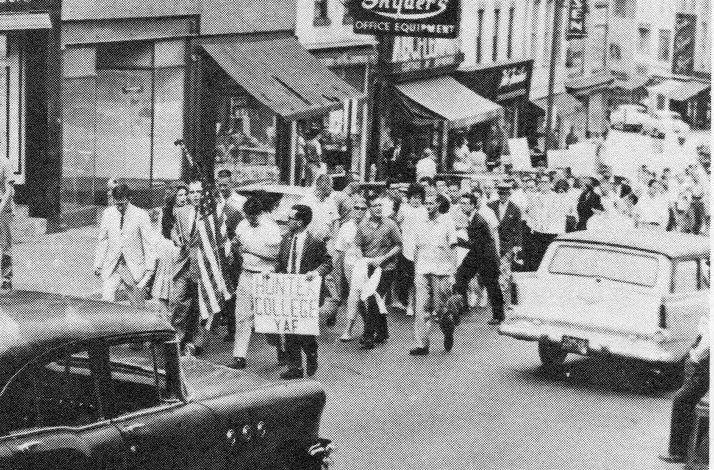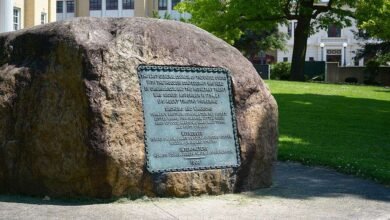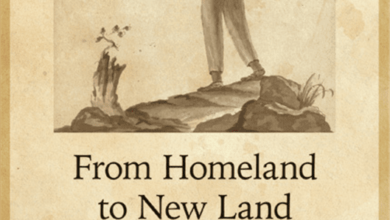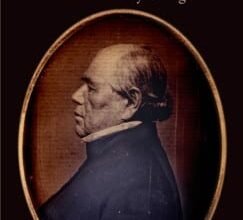The Battle of Newburgh, White Citizens Councils & New York State


 Despite theoretically desegregating schools in 1938, New York State effectively continued to operate on the basis of an 1899 state ruling that upheld its segregated schools.
Despite theoretically desegregating schools in 1938, New York State effectively continued to operate on the basis of an 1899 state ruling that upheld its segregated schools.
Then, in May 1954 the U.S. Supreme Court handed down its decision in Brown v. Board of Education which required an end to racial segregation in public schools.
The decision contributed to a reordering of living patterns and an eventual realignment of the political parties across the United States.
Resistance to Brown v. Board
Ten days after the Brown decision was handed-down, Mississippi Circuit Judge Tom Pickens Brady gave a speech to the Sons of the American Revolution urging white people to oppose the ruling.

 Later a justice of the Mississippi Supreme Court, Brady declared integration a threat to the “Southern Way of life,” and his speech was published as a pamphlet titled “Black Monday” (referencing the day of the week the Brown decision was released).
Later a justice of the Mississippi Supreme Court, Brady declared integration a threat to the “Southern Way of life,” and his speech was published as a pamphlet titled “Black Monday” (referencing the day of the week the Brown decision was released).
The 92-page booklet was distributed to white schoolchildren across Mississippi.
On July 11, 1954 white residents of Indianola, Mississippi met in their town hall and formed the first White Citizens’ Council to carry out resistance to racial integration of public schools.
The meeting was organized and the organization led by a plantation manager and former Mississippi State football captain Robert Boyd “Tut” Patterson (1921-2017).
“Integration represents darkness, regimentation, totalitarianism, communism and destruction,” Robert Patterson wrote. “Segregation represents the freedom to choose one’s associates, Americanism, State sovereignty and the survival of the white race. These two ideologies are now engaged in mortal conflict and only one can survive.”
According to the Equal Justice Initiative’s History of Racial Injustice Calendar (EJI), by 1955, 250 White Citizens’ Councils had been created throughout the South, boasting some 60,000 members; by 1956, active Councils were operating in 30 states, and by 1957, membership reached 250,000.
“The Councils’ membership of business, religious, and civic leaders defended white supremacy and used social pressure and economic retaliation to intimidate and coerce people who supported integration,” EJI reports.

 For example, in South Carolina, where 55 Council chapters were active by July 1956, 17 Black parents were fired or evicted from their farms within two weeks of signing a pro-integration petition in the small town of Elloree.
For example, in South Carolina, where 55 Council chapters were active by July 1956, 17 Black parents were fired or evicted from their farms within two weeks of signing a pro-integration petition in the small town of Elloree.
In Yazoo County, Mississippi, when 53 Black residents signed an NAACP petition for integration, the local Council published their names in a newspaper ad, leading to harassment, firing, and credit cancellation. In the end, all signers removed their names from the petition and the Yazoo County NAACP disbanded.
“The White Citizens’ Councils claimed to not endorse or engage in explicit violence and in that way tried to differentiate themselves from groups like the Ku Klux Klan,” EJI says and the “Uptown KKK” did largely avoid the Klan’s stigma but shared many goals — and often the same members.
The resistance to integration was largely successful, especially in the South. In the five Deep South states, every single one of 1.4 million Black schoolchildren attended segregated schools until the fall of 1960.
It largely succeeded in the North as well.
“Unlike desegregation in the South, New York City schools never faced a citywide desegregation lawsuit and were never court-ordered to desegregate, and to date, have not achieved racial/ethnic integration,” writes Danielle Cohen, of the UCLA Civil Rights Project/Proyecto Derechos Civiles.
Historian Peter Singer has noted that “between 1960 and 1964, about half a million white people left New York City for white suburban enclaves. The redlining of areas by banks and real estate agencies designating them for specific racial groups produced community and school segregation patterns in suburbs across the country that continue to exist today.”
Newburgh’s Welfare Witch Hunt
Historian Tamara Boussac notes that “with the development of suburban housing and malls in nearby towns and the massive in-migration of African Americans in the 1950s, stores and white residents started to leave Newburgh,” in Orange County, NY.
“The city was caught in a spiral of white flight, capital flight and disinvestment, all resulting in the loss of fiscal revenues for the municipal government,” she writes.
“Overlooking the fact that the city had faced structural economic woes since the end of the war, city officials offered a compelling narrative that scapegoated newly-arrived African Americans, who had supposedly come to Newburgh to receive welfare, for the rise in slums as well as declining property values and business activity in the city.”
Conservative city council member George McKneally and his fellow conservative council members blamed the arrival of African-Americans for the city’s economic plight.
He argued that welfare programs were the cause of their arrival and, drawing on conservative support in the city for such segregationist attitudes, arranged to have Maryland-born Joseph McDowell Mitchell appointed City Manager in 1960.
Soon after assuming office, Mitchell introduced a range of controversial welfare reforms, which made him a popular figure among American conservatives.
He echoed segregationists, saying the “welfare state… [was] helping to make a nation of parasites” and that “the mushy rabble of do-gooders and bleeding hearts in society and politics have marched under the Freudian flag toward the omnipotent state of Karl Marx.”

 He conducted a “muster” of all the welfare recipients in the city, requiring them to report to the police station at City Hall to be interrogated over their status before they could collect their benefits — in the end, no cases of fraud were uncovered.
He conducted a “muster” of all the welfare recipients in the city, requiring them to report to the police station at City Hall to be interrogated over their status before they could collect their benefits — in the end, no cases of fraud were uncovered.
Afterward, Mitchell attempted to implement a plan to require welfare recipients to work eight hours a day for the city government.
State authorities struck these plans down but the city government announced in response it would decline funding for welfare from the state for 1962 so they could enact their plans.
On June 12, 1961 the City Council voted to give Mitchell full authority over the city’s welfare department. Seven days later a thirteen-point new “Welfare Code” was passed.
On June 29th the New York Times published a front-page editorial saying Mitchell had brought the “Dark Ages” to Newburgh and that “cruelty anywhere is the concern of mankind everywhere.”
Then senator Barry Goldwater (1909-1998), who would become the Republican presidential nominee, met with Mitchell to congratulate his “stand against welfarism.”
The conservative organization Young Americans for Freedom held a demonstration in his support. By October a Gallup poll showed “wide-spread public approval” of his plans.
The worst of the new city code required all recipients of welfare report to police stations monthly to confirm their status. It also expanded the reasons to withheld relief.
It proposed to replace cash disbursements with vouchers for food, clothing, and rent, and threatened unwed mothers who gave birth again with the withdrawal of their benefits.
It required able-bodied men on relief to work 40 hours a week for the city, but only one could when the plan was implemented on July 15, 1961 — an unemployed iron worker with six children.
The plan was published in conservative newspapers around the United States.
Mitchell claimed that race was “of no consequence” to his actions, but said people of color moving had “contributed to the rise of the slums” and the exodus of “more constructive or productive citizens.”
The dispute over these policies became known as the “Battle of Newburgh” after an NBC White Paper documentary by that title which aired in 1962.
New York’s Republican Governor Nelson Rockefeller established a commission to investigate Mitchell under the Moreland Act, and directed Attorney General Louis J. Lefkowitz to oppose the plans of Newburgh conservatives.
In August 1961 the Orange County Supreme Court granted a temporary injunction striking down twelve of the thirteen points and in December the New York Supreme Court rendered the injunction permanent.
Mitchell & White Citizens’ Councils
Newburgh City Manager Joseph McDowell Mitchell’s support waned by 1963, he resigned that September and the City Managers Association expelled him. He announced he was taking a job as director of the conspiratorial right-wing John Birch Society, though changed his mind.
Instead, he eventually assumed a post as field director of the Maryland and Virginia Citizens’ Councils, saying he was answering segregationist George Wallace’s (1919-1998) call to “stand up and be counted.”
He worked on Wallace’s bid for Presidency in 1964, campaigning for him with pro-segregation rhetoric, saying at one point that white supporters of the Civil Rights Movement were “the fringe, scum of society that is doing this and causing this trouble.”

 The February 1964 New York City School Boycott, was a significant civil rights protest against segregation and inequality in education which occurred in response to the failure of New York City schools to desegregate.
The February 1964 New York City School Boycott, was a significant civil rights protest against segregation and inequality in education which occurred in response to the failure of New York City schools to desegregate.
Five months later Democrats led the enactment of the Civil Rights Act of 1964, but it included a loophole allowing the continuation of school segregation in the largest northern cities including New York City, Boston, Chicago and Detroit.
The Civil Rights Act of 1964 reaffirmed Brown by ostensibly banning discrimination based on race, color, religion, sex, and national origin. It prohibits unequal application of voter registration requirements, racial segregation in schools and public accommodations, and employment discrimination.
At the start of the 1964-65 school year, less than 3% of the South’s Black children attended school with White students, and in Alabama, Arkansas, Georgia, Mississippi, and South Carolina that number remained substantially below 1%.
In 1967, 13 years after Brown, a report by the U.S. Commission on Civil Rights observed that white violence and intimidation against Black people “continues to be a deterrent to school desegregation.”
Former segregationist Newburgh City Manager Joseph McDowell Mitchell moved to Florida where he became city manager of Haines City in 1974, then Cocoa Beach in 1977, and ultimately died in Florida in 1993.
Read more about white supremacy in New York State.
Illustrations, from above: Conservative activists march through Newburgh during a August 1961 Young Americans for Freedom protest (courtesy by Ann Pfau); Tom Pickens Brady segregationist Black Monday anti-Brown v. Board booklet, ca. 1955; Citizen’s Council logo; an editorial cartoon supporting Newburgh’s welfare rules by Jerry Costello of the Knickerbocker News in Albany; and students prepare signs for the 1964 New York City School Boycott.
Source link




